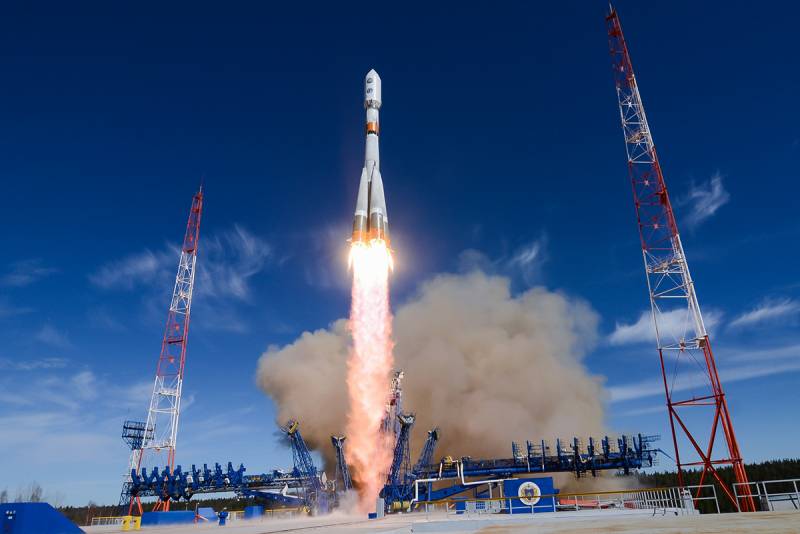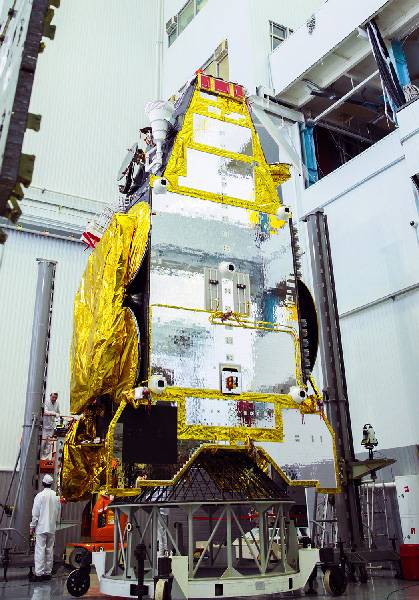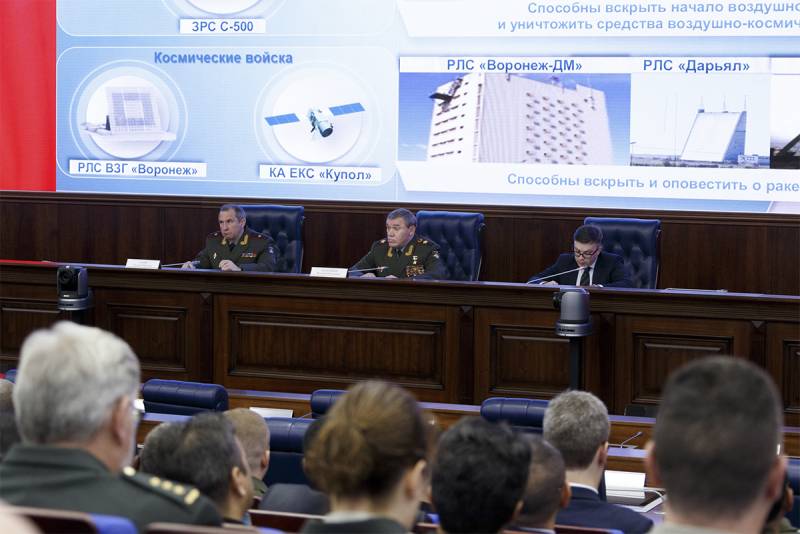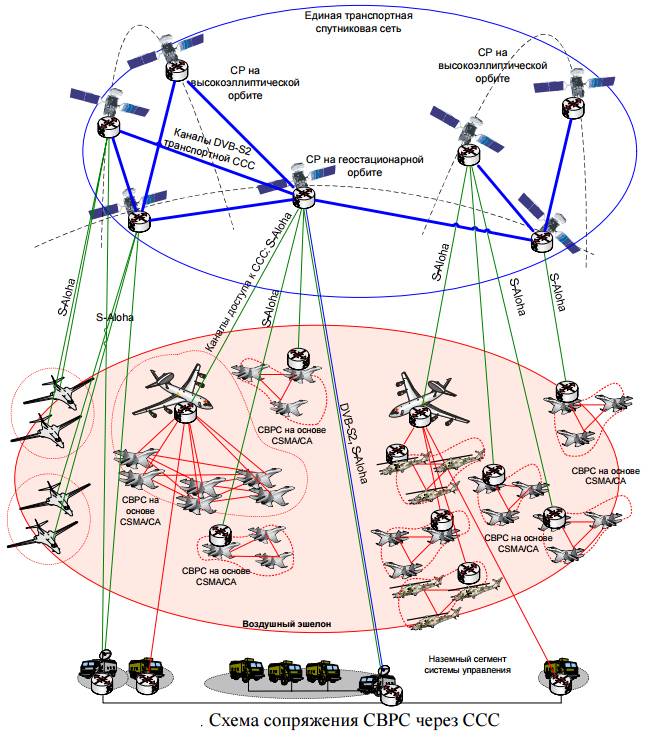Earth surface control: space group of the Russian Aerospace Forces in the coming years

Launch of the Soyuz-2.1b launch vehicle with the Cosmos-2518 spacecraft, the second CEN satellite, May 25, 2017
Photo of the Ministry of Defense of the Russian Federation
On July 3, the Krasnaya Zvezda newspaper published an interview with Colonel-General Sergei Surovikin, Commander of the Aerospace Forces. He spoke about ongoing work on the development of all components of the videoconferencing system, including space. At the same time, a number of projects of this kind are being implemented, and plans for them are planned for several years in advance.
Development plans
According to S. Surovikin, already in September this year it is planned to complete the tests of the space communications complex based on Blagovest spacecraft. These devices operate in geostationary orbit.
In 2022, it is planned to begin the deployment of the promising Unified satellite communications system of the armed forces of the third stage. In 2023, the launch of satellites of the high-orbit space reconnaissance system will begin.
The construction of the Unified Space Detection and Combat Command System is ongoing. The deployment of its grouping will be completed by 2024. Based on the results of these measures, VKS will be able to carry out global control of the Earth's surface. In addition, the TSA will increase the survivability of combat control systems in difficult situations.
Also, the commander-in-chief of the videoconferencing noted the project of an auxiliary nature. In the interests of the space constellation, a unified command and measurement system "Topaz" is being developed. In the future, it will provide control of spacecraft in all types of orbits.

The first product 14F149 "Blagovest" at the assembly stage. Photo "ISS named after Reshetnev"
Communication through Blagovest
As follows from a new interview, in the near future all necessary verification activities will be completed, as a result of which full-fledged operation of communication satellites of the 14F149 Blagovest type will begin. Currently, there are four such products in geostationary orbit and they are being tested before commissioning.
Product 14F149 was developed by Information Satellite Systems named. Reshetneva "commissioned by the Ministry of Defense. It is based on a fairly multi-purpose platform "Express 2000". As far as is known, foreign contractors were involved in the development and production of the target equipment, but their share was not disclosed. The Blagovest satellite has a mass of approx. 3,4 tons and is equipped with a set of transponders for operation in the Ka and Q bands. A communication system based on Blagovestov provides voice and video communications, as well as high-speed data transmission.
The first satellite of the series, Blagovest No. 11L or Cosmos-2520, went into orbit on August 17, 2017 from Baikonur. In 2018, spacecraft No. 12L and No. 13L were sent into space. On August 6, 2019, the fourth launch took place. The grouping has reached the required size and can now be used in practice. The designated satellite life is 15 years.
Third Generation
The development of the Third Generation / Third Stage Unified Satellite Communications System (ЕССС-3) was launched in 2012. During that period, development work was launched on a number of components of the future system. As reported later, spacecraft in geostationary and highly elliptical orbits, as well as ground-based complexes for various purposes, were supposed to enter it.
According to well-known data, ESSS-3 should provide satellite communications and command and control at various levels. With its help, noise-immune voice communication, data transmission, troop control, etc. will be supported. ESSC-3 is distinguished from previous systems by its increased data transfer rates for all conditions.

On December 17, 2018, during a briefing by the Chief of the General Staff with representatives of the military-diplomatic corps for the first time, they showed the possible appearance of the Kupol satellite. Photo by the Ministry of Defense of the Russian Federation
The exact composition of ECCS-3 and the characteristics of the individual elements are still unknown. The deployment of the space part of this system will begin in 2022, and it is hoped that during this period the Ministry of Defense will publish certain details.
Discovery and combat control
Of particular importance to national security is the Unified Space Detection and Combat Command System, which is planned to be deployed by 2024. CEN Dome is a key component of the missile attack warning and strategic nuclear forces control system. Its appearance and full commissioning will sharply increase the capabilities of the armed forces to identify and repel threats.
Earlier in the Russian SPRN satellites of the Oko and Oko-1 systems were used. By the middle of the tenth years, they had failed and demanded a replacement. To restore the space echelon of the SPRN, the Ministry of Defense instructed RSC Energia and Comet Corporation to develop a new satellite 14F142 Tundra.
The resulting product has all the necessary features, and surpasses its predecessors in its characteristics. So, the torch of a launching rocket is detected not only against the background of the atmosphere or space, but also above the ground. It provides tracking of the detected missile with the calculation of the possible target area. On-board equipment allows the use of the Tundra in communication and combat control systems for data exchange and issuing orders.
It was originally planned to launch launches of vehicles in 2014 and put up to 10 units into orbit by the end of the decade. In fact, the first launch of the Tundra (Cosmos-2510) took place in November 2015. The last at the moment is in May 2020. Based on their results, four vehicles operate in highly elliptical orbits. This is the minimum staffing to solve the tasks - to track missile launches in the Northern Hemisphere and participate in data exchange. For the full functioning of the CEN “Dome” should include nine active satellites. The remaining five will be put into orbit by 2024.
Today and tomorrow
According to open data, now the Russian satellite constellation includes more than 150 military and dual-use items. According to various estimates, approx. two-thirds of this equipment belongs to the armed forces and is operated by VKS specialists.

General principles of the satellite communication system with spacecraft of various types.
Figure Bastion-opk.ru
In recent years, there have been positive trends in the field of renewal and development of the group. A year ago, the Russian leadership revealed interesting information on this subject. So, over six years (2013-19), the number of military and dual-purpose satellites increased by 50%, and the share of new products was brought up to almost 80%.
The development of the space videoconferencing group does not stop. Some projects are still at the stage of development work, in others spacecraft launches have begun, and others have reached operational status. At the same time, work continues on promising programs in all main areas, from communication and control to reconnaissance and tracking a likely enemy.
It should be borne in mind that several existing satellite systems for various purposes remain in operation, but their future has already been determined. Due to the limited service life of the equipment, these systems will be gradually decommissioned, both as modern replacements appear and in connection with the failure of their satellites. However, the share of modern devices with a large supply of resources is constantly growing, which positively affects the overall potential of the entire group.
In general, in recent years, much has been done to create and restore the necessary capabilities in space. However, work does not stop, and the videoconferencing system is to implement a number of new projects. Both the combat readiness of the armed forces and the strategic security of the country depend on their successful completion.
Information